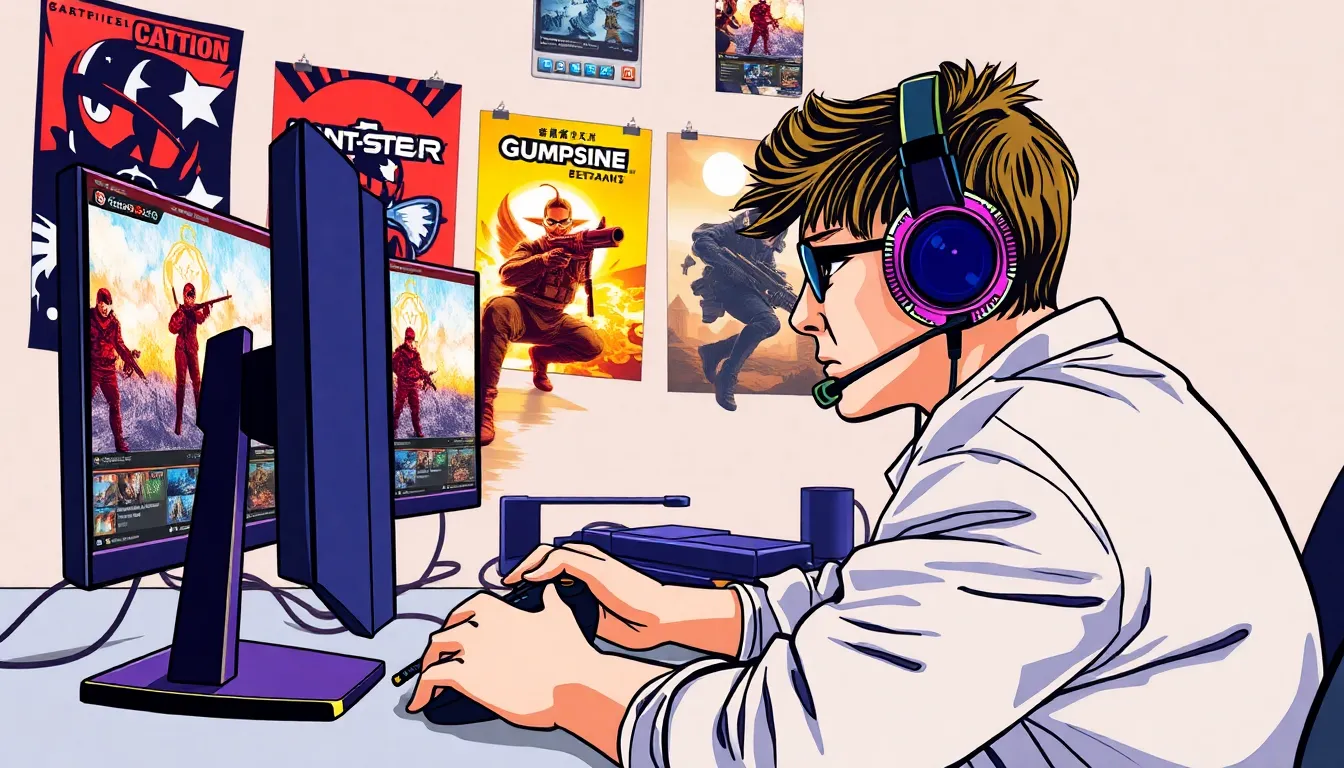Table of Contents
ToggleIn the world of Counter-Strike: Source, maps are more than just digital landscapes; they’re the battlegrounds where legends are made and rivalries are born. Picture this: a narrow alleyway, a sniper perched on a rooftop, and your heart racing as you navigate through enemy territory. It’s the thrill of the game that keeps players coming back for more.
But not all maps are created equal. Some are iconic, while others might leave players scratching their heads, wondering what the designers were thinking. Whether you’re a seasoned pro or a newbie trying to find your footing, understanding the nuances of these maps can be the difference between victory and a spectacular faceplant. Dive in as we explore the most memorable Counter-Strike: Source maps that have shaped the game and the strategies that can turn you into a map master.
Overview of Counter Strike Source Maps
Counter-Strike: Source maps play a vital role in gameplay dynamics. Players navigate various environments, each designed with distinct strategies in mind. Map design impacts tactics, creating gameplay that requires players to adapt quickly. Iconic maps like de_dust2 and cs_assault challenge players with unique layouts and objectives.
Not every map is widely appreciated. Some, such as de_aztec, receive mixed feedback, leaving players feeling uncertain about their design. Knowledge about the specifics of each map improves performance, helping players understand sightlines and choke points. Familiarity with a map’s geography allows teams to devise more effective strategies.
The layout of maps greatly influences game flow. Maze-like structures create opportunities for ambushes while open areas favor snipers. Connectivity between areas also plays a role, impacting rotation times and team movement. Mastery of navigation techniques enhances responsiveness in critical situations.
Players often rely on community resources to deepen their understanding. Tutorials and guides help newcomers develop their skills on popular maps. Additionally, mods and custom maps offer fresh challenges, encouraging creativity among map makers. Engaging with the community fosters a greater appreciation for map design.
Ultimately, grasping the nuances of Counter-Strike: Source maps enhances overall gameplay experiences. Immersing oneself in each map’s design and strategies can lead to improved teamwork and victory. Mastering maps represents a significant aspect of competitive play, showcasing the importance of this element in the game’s landscape.
Types of Counter Strike Source Maps

Counter-Strike: Source features various map types that enrich the player experience, including official maps and community maps. Each type serves distinct gameplay styles and preferences.
Official Maps
Official maps are created by the game’s developers and are integral to standard play. These maps include fan favorites like de_dust2, de_inferno, and cs_office. They provide players with a balanced experience, offering a mix of open spaces, close-quarters combat options, and strategic choke points. High skill ceilings characterize these maps, enabling players to learn and master key tactics. The layouts of official maps also focus on enhancing competitive play, which makes them staples in tournaments and matchmaking systems.
Community Maps
Community maps arise from talented players and map makers, showcasing creativity and innovation. Players can find diverse environments, including themed maps and unique gameplay modes. Examples include custom maps like de_dust2_2 and aim_map, designed for specific training or entertainment purposes. Community maps often vary in quality, providing an opportunity for players to explore new strategies and playstyles. Many players enjoy these maps for fresh experiences, employing them in casual games or scrims. Customization options allow for personalized gaming experiences, attracting varied player bases.
Creating Custom Counter Strike Source Maps
Creating custom maps in Counter-Strike: Source enhances gameplay and allows for unique spaces. Players can design maps tailored to their preferences and strategies, making each experience distinct.
Tools and Software
Several tools facilitate the development of custom maps. Hammer Editor serves as the primary mapping tool, allowing detailed level design. Players also use ZHLT compilation tools to compile maps quickly. Additionally, software such as Blender assists in creating custom models and textures, adding depth to the map environment. Valve’s Developer Community provides extensive resources, including tutorials and forums where designers can seek assistance and feedback.
Design Tips and Best Practices
Successful map design hinges on clarity and balance. Design maps with a good mix of open areas and tight corridors to cater to different play styles. Ensure visibility remains clear for players while maintaining cover options. Incorporate spawn points thoughtfully to avoid spawn camping. Reviewing playtests can highlight areas needing adjustment. Aim for a logical layout that enhances flow while minimizing confusion. Engaging textures and lighting enhance aesthetics, drawing players into the map experience.
Popular Counter Strike Source Maps
Counter-Strike: Source features several iconic maps that enhance gameplay and competitiveness. The following sections detail two of the most popular maps.
Dust2
Dust2 remains one of the most celebrated maps in the Counter-Strike franchise. This map offers players a balanced layout showcasing both close-quarter and long-range combat. Players frequently utilize its central mid area for strategic control. Controlling key sightlines impacts the flow of the game significantly. Teams often deploy specific strategies, such as using smokes and flashes, to secure advantageous positions. Iconic bomb sites A and B provide multiple entry points, encouraging diverse tactical play. Mastering Dust2 requires players to understand choke points and effective rotation tactics. Game rounds frequently unfold in unexpected ways due to the map’s dynamic nature.
Inferno
Inferno is another staple map in Counter-Strike: Source, characterized by its narrow streets and intricate designs. The distinct two-bomb site setup challenges players to coordinate effectively. Players often find themselves battling for mid-control, which becomes crucial for overall strategy. The close corridors favor the use of grenades and teamwork, allowing for strategic ambushes. Inferno features a blend of open areas and confined spaces, forcing players to adapt constantly. Knowledge of common hiding spots enhances survival chances and disrupts enemy strategies. Teams typically develop specific routines that maximize their chances of securing critical map control. Understanding the layout can significantly improve player performance in competitive matches.
Mastering Counter-Strike: Source maps is crucial for any player looking to enhance their gameplay. Each map offers unique challenges and opportunities that require quick thinking and strategic adaptation. Whether navigating the iconic layouts of Dust2 and Inferno or exploring the creativity of community maps, understanding the nuances of these environments can significantly impact performance.
Players who invest time in learning map specifics will find themselves better equipped to strategize and collaborate with teammates. The dynamic nature of these battlegrounds not only enriches the gaming experience but also fosters a deeper appreciation for the artistry behind map design. Embracing both official and community maps opens doors to diverse gameplay and endless possibilities.







